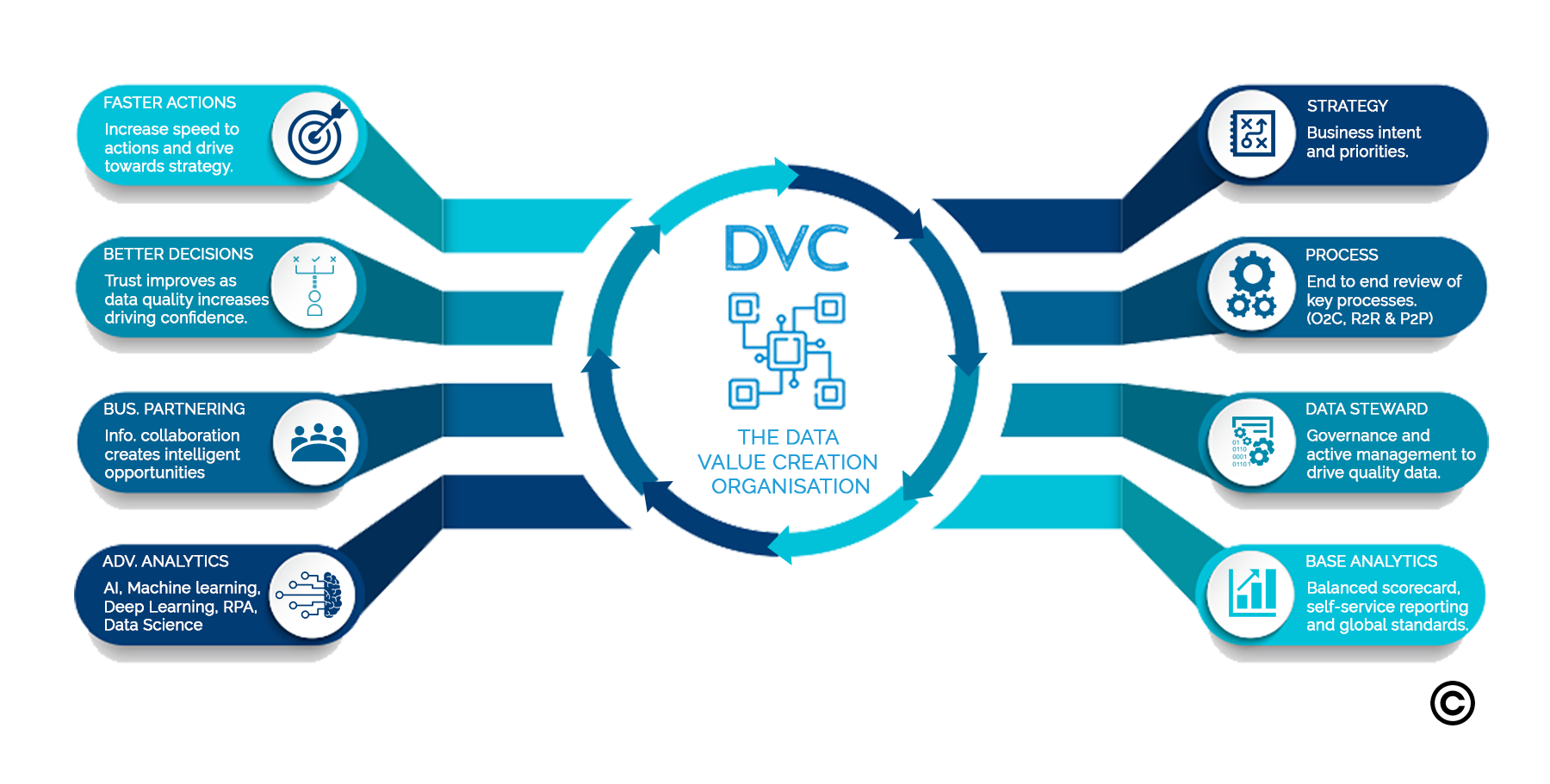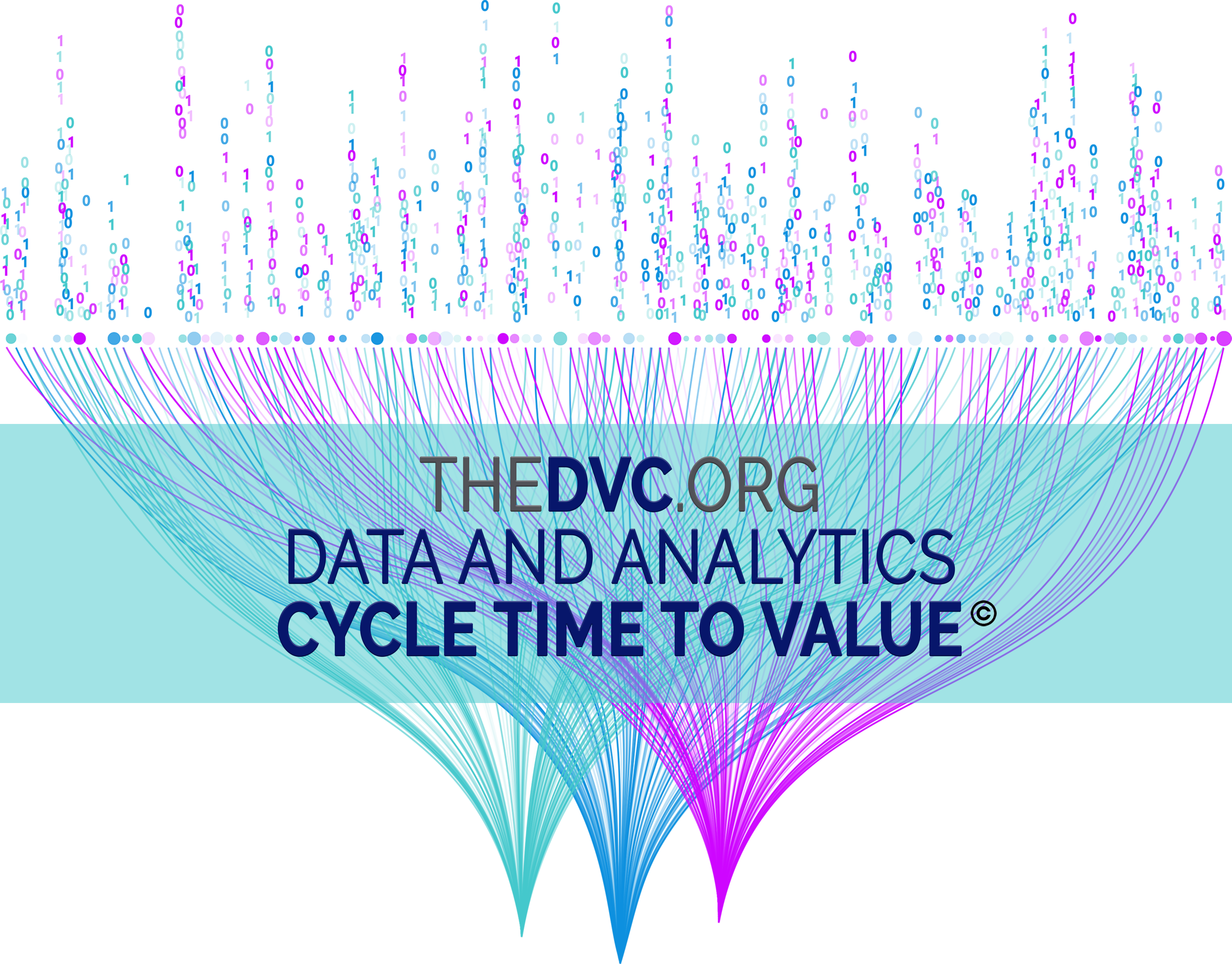
Industry 4.0 is changing the worlds’ operating model with applications such as ‘Artificial Intelligence for Social Good’ – being led by Google and Microsoft – through to automation of business decisions and actions, with a great example from ANT Financial Services.
As tech companies lead disruption in the market place, how does a company that has many years of history change to be as agile as a start up in implementing its strategy and realising value?
The simple answer is through their mindset, maturity and approach to processes, insights, decisions and actions all of which can be improved through a solid data and analytics strategy.
This can be defined as improving the Cycle Time to Value.
Improving the Cycle Time to Value (CTV) through a focused data strategy
“CTV is the time it takes from process to action, creating or protecting value.”
Understanding, investing and supporting the implementation of the right data strategy will set your business on the path to better processes, cleaner more accurate insights and eventually automated decisions and actions. There have been clear cases – such as ANT Financial Services – where creating a data culture drives profitability, keeps costs to a minimum and reduces the risks.

The Cycle Time to Value (CTV)
Once you have defined and set the strategy, the CTV is dependent on the speed and quality of:
- Processes – Purchase-to-Pay (P2P), Order-to-Cash (O2C) and Record-to-Report (R2R) are the main process areas, but can be complex, bypassed or ignored. This often impacts the length of the CTV and is a major cause of poor data quality.
- Insights – created through data, analytics and collaboration usually comes from various different sources of reliability with many managers relying on gut instinct rather than accurate or effective information.
- Decisions – multiple or unclear decision makers slow the CTV. Sounding boards, ineffective use of Steering Committees and Governance Boards all take time and may not lead to any concrete decisions.
- Actions – even when decisions have been made, actions have to be taken to put them into operation. Many times the action taker either: does not have the authority, does not feel empowered or, even worse, it is not their managers priority to deliver that decision.
Businesses must recognise the role of the Chief Data Officer in implementing a strong data strategy. This is key for the improvement in all of the areas mentioned above, which will then result in a decrease in Cycle Time to Value as it seeks to standardise, simplify and automate these areas.
So how do we decrease cycle time utilising data and analytics?
The specific answer depends on each business and what it wants to achieve in its strategy.
Before decreasing the Cycle Time to Value it is fundamental to know where your business is in terms of:
- Culture and mindset – the leadership team needs to be fully supportive and on board.
- Maturity curve for analytics – this will help a business to understand how advanced its data and analytics programmes are and what it needs to achieve full maturity and sustainability.
- Willingness to make major changes in the business’ operational model to a data driven culture.
If these fundamental areas can be addressed, then we can look to deploy a data strategy that can help increase profitability, drive cost efficiencies and reduce risk, whilst decreasing cycle time for processes, insights, decisions and actions.
You can start to decrease cycle time by focusing on your key metrics, the ones that drive the strategy and targeting these areas:
- Process Excellence – addressing the processes that support key metrics by standardising and simplifying them, reduces the cycle time and will also start to improve the data quality and reliability of those metrics.
- Data Governance – focusing on improving and managing key data elements will have the benefit of releasing value. A quick area of focus and improvement is to make sure the customer details stored are correct, as errors here will impact profit and loss (e.g. wrong invoicing), balance sheet and as a result, cashflow. Data Governance is the single most important area for decreasing CTV, but is often misunderstood in terms of its significant value to the business.
- Democratisation of intelligence – Once process and data have improved quality, the next step is to build information into intelligence that can be shared across the organisation. This ensures a consistent approach to interpreting information and reduces the number of miscalculations and errors that would have been used to drive investment decisions.
- Collaboration – Intelligence moves to insight with collaborative practices and clear ownership of each metric across the different levels of hierarchy.
- Decision making – Until you can move into higher level analysis (such as prescriptive) where decision making can be automated, businesses must look at how they empower decisions at the right level of the organisation.
- Actions – Carrying out the actions from the decisions made are vital to realising the value, thus completing the cycle. This may seem a common sense item, but many actions being taken are either not completed or ignored. Making sure the people who are responsible for the actions have the ability and priority to carry them out are paramount – and most importantly that all actions support the strategy!
In summary…
New businesses are utilising data and analytics from the outset to allow them to build comprehensive offers and respond to customers and prospects in a much more targeted and responsive fashion. Many are going further utilising Artificial Intelligence to help automate decisions and actions – reducing Cycle Time to Value to a minimum. They do this by setting the strategy, building their base algorithms to reflect their intentions, then reviewing, adjusting and validating until profits are maximised, costs are minimised and risk is reduced to acceptable levels.
If your business is stuck in the past and does not change to this new mindset and culture shift, it will simply not exist in the future. Market reality will continue to rapidly change and you will simply not be able to compete at pace, continuously eroding your market share.
Implementing a strong data strategy that allows you to actively reduce the Cycle Time to Value, addressing this gap and allowing companies to compete in this new environment, is a must have for businesses of all shapes and sizes.

